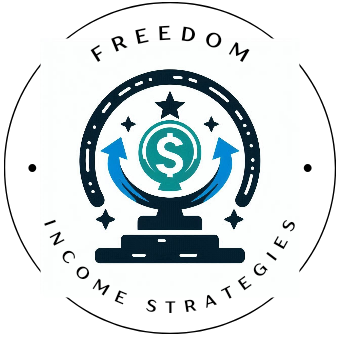Building a dividend portfolio is a powerful strategy for generating passive income and achieving long-term financial stability. However, even seasoned investors can fall prey to common mistakes that jeopardize their goals. By understanding and avoiding these pitfalls, you can optimize your dividend investing journey and grow your wealth over time.
In this guide, we’ll explore the most frequent missteps investors make when constructing a dividend portfolio and provide actionable tips to help you avoid them. Let’s dive in.
1. Chasing High Dividend Yields
One of the most enticing traps for dividend investors is focusing solely on high dividend yields. A high yield may seem attractive, but it can also indicate potential risks such as financial instability or unsustainable payouts.
Why It’s a Problem:
- Dividend traps: Companies with abnormally high yields may be struggling financially.
- Unsustainability: High yields can result from a declining stock price, signaling trouble.
How to Avoid It:
- Evaluate the payout ratio to ensure dividends are sustainable.
- Focus on companies with a history of consistent and growing dividends, such as Dividend Aristocrats.
2. Neglecting Dividend Growth
Some investors focus only on the current dividend yield and ignore dividend growth potential. A company’s ability to increase dividends over time can significantly impact your total returns.
Why It’s a Problem:
- Missing out on compounding: Dividend growth stocks can lead to exponential income growth.
- Inflation: Without growth, your purchasing power diminishes.
How to Avoid It:
- Look for companies with a track record of annual dividend increases.
- Analyze metrics like the dividend growth rate and earnings growth.
3. Failing to Diversify
Relying too heavily on a single sector or company can expose your portfolio to unnecessary risks.
Why It’s a Problem:
- Economic downturns: Specific sectors, like energy or real estate, may underperform during downturns.
- Overexposure: A single company’s poor performance can significantly impact your income.
How to Avoid It:
- Diversify across multiple sectors such as technology, consumer goods, and healthcare.
- Consider using dividend-focused ETFs for broader exposure.
4. Ignoring Financial Health
Focusing on dividends without considering a company’s financial stability is a recipe for trouble. A strong balance sheet is essential for sustaining and growing dividend payments.
Why It’s a Problem:
- Dividend cuts: Financially weak companies may reduce or eliminate dividends.
- Stock price decline: Poor financial health often leads to declining stock value.
How to Avoid It:
- Analyze financial metrics like debt-to-equity ratio, free cash flow, and return on equity.
- Use tools like Seeking Alpha Premium to assess a company’s financial health.
5. Overlooking Taxes
Taxes can eat into your dividend income if not managed carefully. Different types of accounts and dividend classifications can impact your tax liability.
Why It’s a Problem:
- Reduced income: High taxes on dividends can lower your effective yield.
- Complex filings: Foreign dividends may require additional tax paperwork.
How to Avoid It:
- Hold dividend-paying stocks in tax-advantaged accounts like IRAs.
- Understand the difference between qualified and ordinary dividends for tax purposes.
6. Timing the Market
Trying to time the market is a losing game for most investors. Frequent buying and selling of dividend stocks can lead to missed opportunities and increased costs.
Why It’s a Problem:
- Missed dividends: Holding periods may be too short to capture payouts.
- Higher costs: Transaction fees and taxes can erode returns.
How to Avoid It:
- Adopt a buy-and-hold strategy focused on long-term growth.
- Reinvest dividends through dividend reinvestment plans (DRIPs) to compound gains.
7. Failing to Reinvest Dividends
Reinvesting dividends is one of the most effective ways to accelerate portfolio growth. Skipping this step can significantly limit your wealth-building potential.
Why It’s a Problem:
- Slower growth: Without reinvestment, you lose out on compounding benefits.
- Opportunity cost: Unused dividends may sit idle, earning minimal returns.
How to Avoid It:
- Enroll in DRIPs offered by most brokerage platforms.
- Automate reinvestments to ensure consistency.
8. Not Reviewing Your Portfolio Regularly
A set-it-and-forget-it approach can lead to missed opportunities or unnecessary risks as market conditions change.
Why It’s a Problem:
- Evolving risks: Companies that were strong performers may lose their edge.
- Missed opportunities: Emerging dividend-paying stocks may be overlooked.
How to Avoid It:
- Schedule periodic portfolio reviews to assess performance and reallocate funds if needed.
- Stay informed about company news and industry trends.
9. Investing Without a Clear Plan
Going into dividend investing without a well-defined strategy can lead to poor decision-making and unmet goals.
Why It’s a Problem:
- Lack of direction: You may chase trends instead of focusing on long-term objectives.
- Emotional decisions: Market volatility can lead to impulsive actions.
How to Avoid It:
- Define your investment goals, whether they are income generation, wealth accumulation, or both.
- Create a written plan that outlines your criteria for stock selection, allocation, and risk tolerance.
10. Ignoring Professional Resources
Trying to go it alone without leveraging professional insights and tools can slow your progress.
Why It’s a Problem:
- Limited knowledge: You may miss critical factors affecting your investments.
- Overlooked opportunities: Expert recommendations can highlight high-potential stocks.
How to Avoid It:
- Leverage comprehensive financial resources to expand your knowledge of dividend strategies.
- Consider subscribing to Seeking Alpha Premium for in-depth research.
Final Thoughts
Avoiding these common mistakes can set you on the path to building a robust dividend portfolio that provides reliable income and long-term growth. Remember, successful dividend investing requires patience, diligence, and a focus on quality over quantity.
By diversifying, prioritizing dividend growth, and leveraging professional tools, you’ll maximize your portfolio’s potential and achieve your financial goals. Start today, and let the power of dividends work for you.
If you’ve found this guide helpful, don’t forget to explore our other resources on dividend investing to continue your journey to financial freedom.

